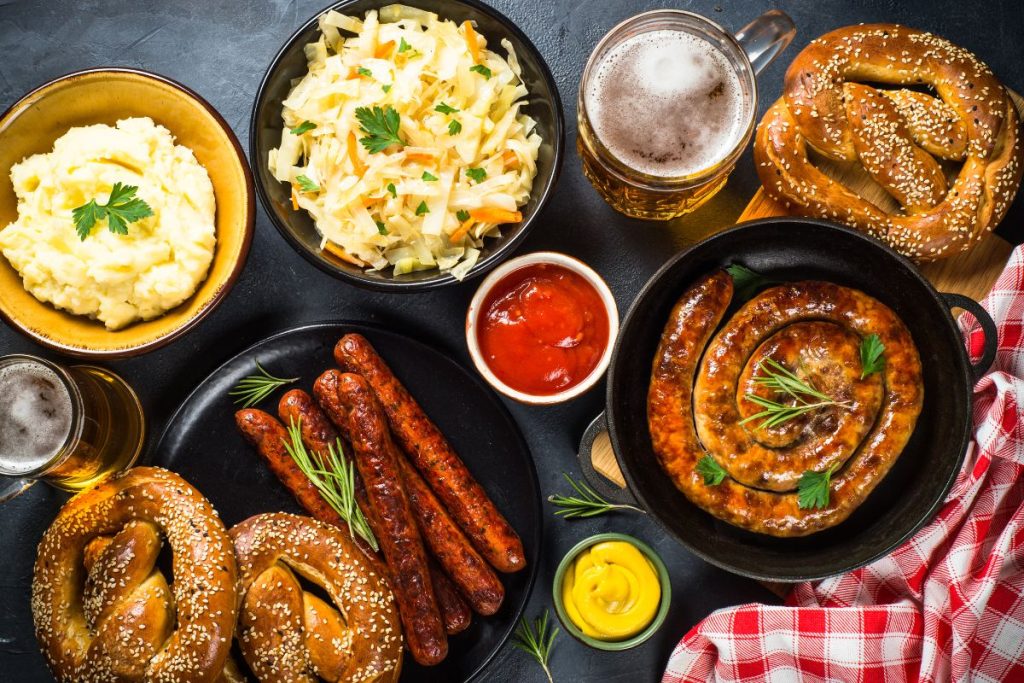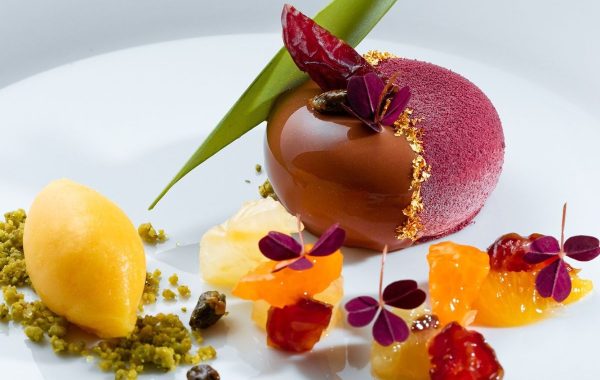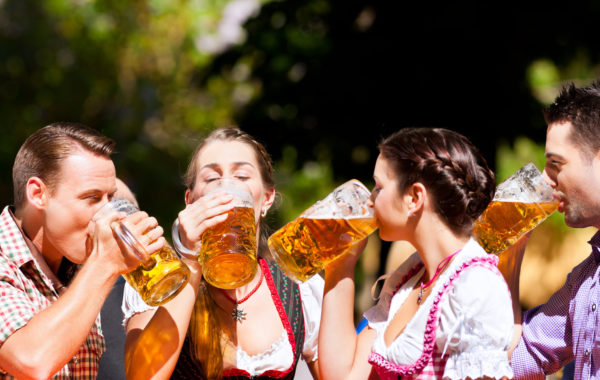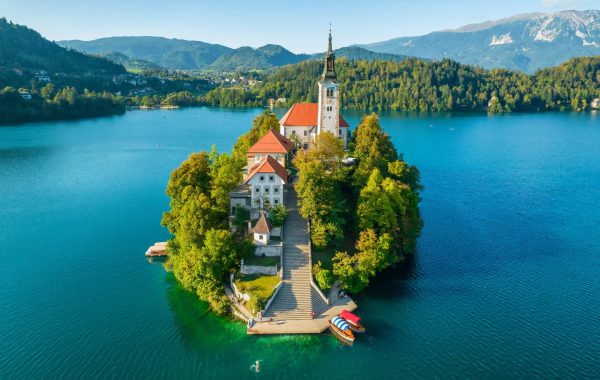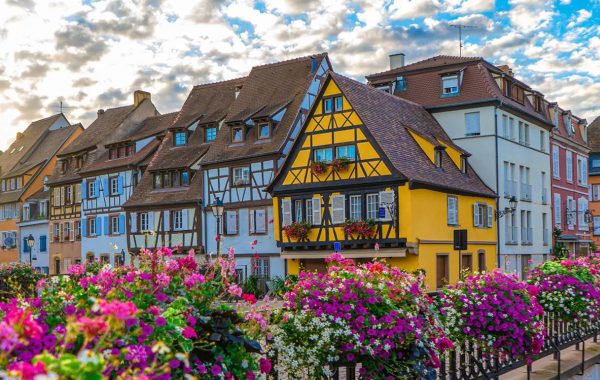German cuisine is known for its richness, heartiness, and diversity. It is comfort food that uses high-quality, often locally sourced ingredients. The culinary traditions of Germany have been influenced by the country’s agricultural history and the many immigrants who have settled there over the years. German cuisine is far more than just beer, sauerkraut, and sausages.
In modern Germany, people appreciate both well-prepared meals enjoyed at leisure and quick bites on the go. Germany is a country of food markets, beer gardens, wine festivals, food museums, and upscale restaurants.
Must Read: City Guide: A First Timer’s Travel Guide To Munich, Germany
Here are 12 traditional German dishes you must try when visiting the country.
Königsberger Klopse
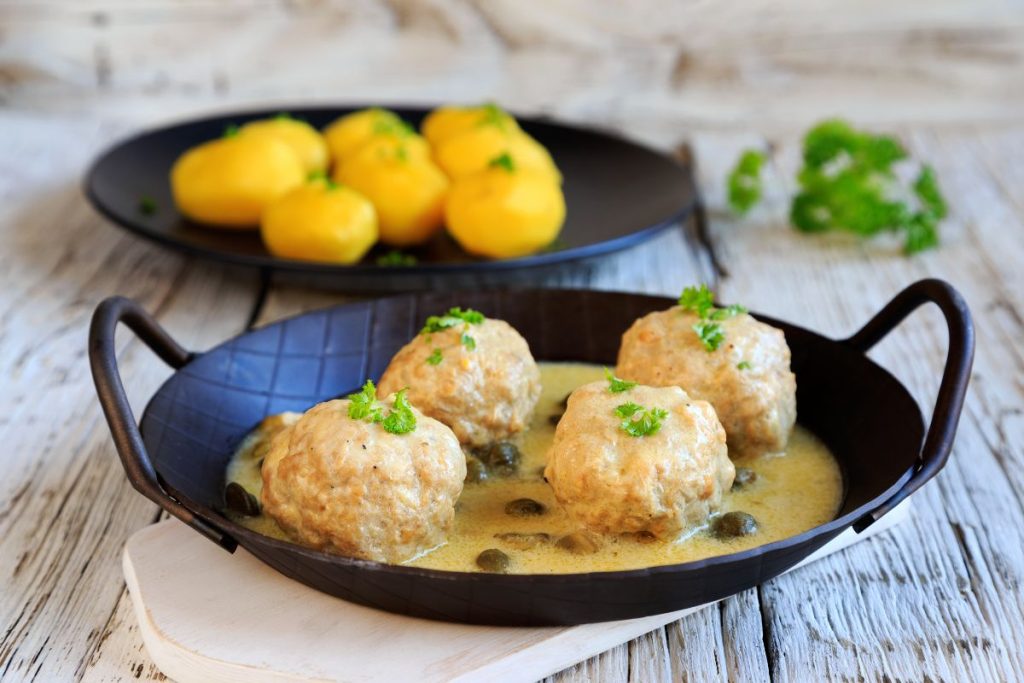
Königsberger Klopse, named after the former East Prussian capital of Königsberg (now Kaliningrad, Russia), are meatballs in a creamy white sauce with capers. This dish is beloved by both grandmothers and chefs. In the German Democratic Republic, it was renamed “kochklopse” (boiled meatballs) to avoid mentioning Königsberg. Nowadays, it is commonly found under its traditional name in German restaurants, especially in Berlin and Brandenburg.
Maultaschen
Maultaschen, originating from Swabia in southwestern Germany, are similar to ravioli but larger. These palm-sized, square pockets of dough come with a variety of fillings, from savory to sweet and meaty to vegetarian. While maultaschen are now available throughout Germany (even in supermarkets), they are most prevalent in the southern regions.
Currywurst
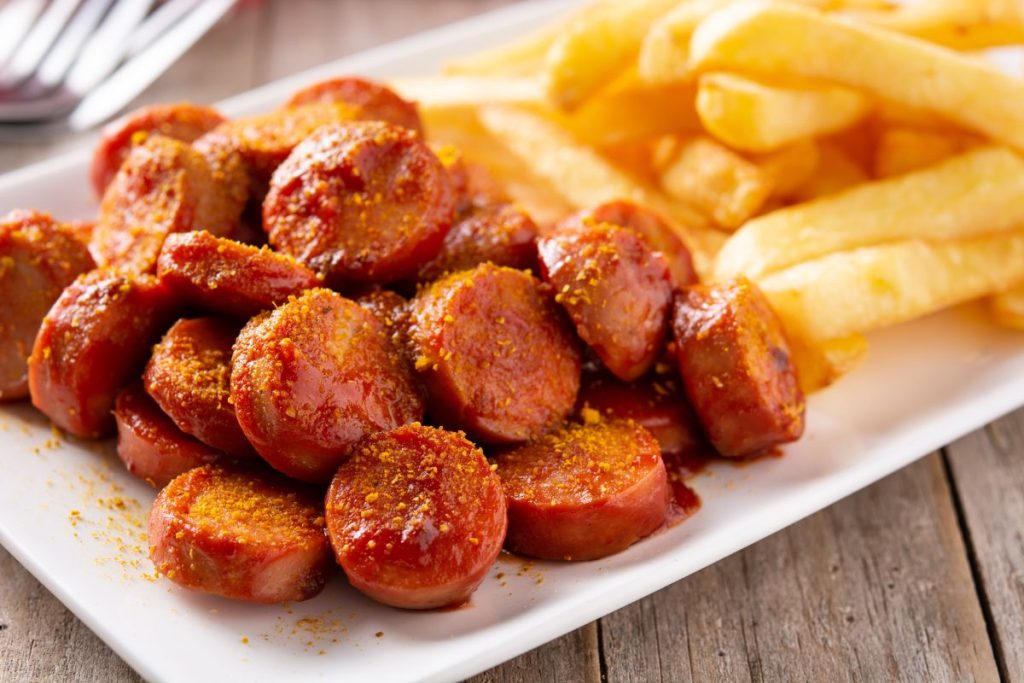
Currywurst has been a staple of German cuisine since 1945. It was created by Herta Heuwer in Berlin in 1949, who mixed ketchup and curry powder obtained from British soldiers and served it over grilled sausage. Today, both boiled and fried sausages are used, and currywurst remains one of the most popular sausage-based street foods in Germany, especially in Berlin, Cologne, and the Rhine-Ruhr area.
Must Read: City Guide: A First Timer’s Travel Guide To Munich, Germany
Bratwurst
Germany is famous for its sausages, with countless cured, smoked, and other varieties. Bratwurst, a type of fried sausage, is particularly popular. There are over 40 varieties of German bratwurst, typically served in a white bread roll with mustard or accompanied by potato salad or sauerkraut, making them a perfect pairing with German beer.
Schnitzel
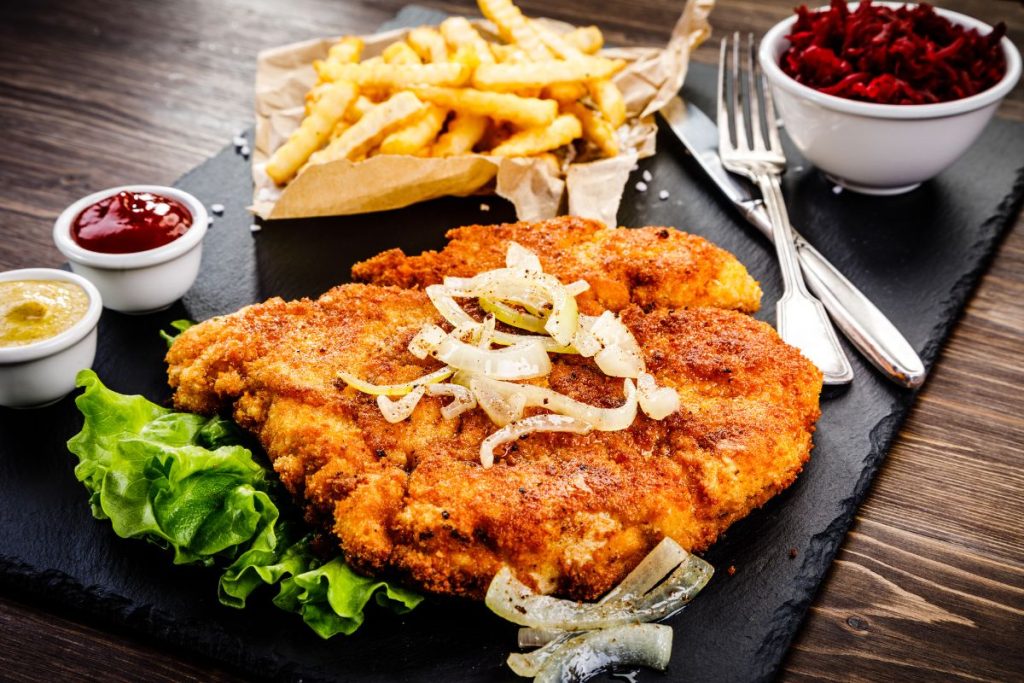
Although schnitzel’s origins are Italian, it has become a beloved dish in Germany. The German version, typically made with pork or turkey, is often served with a variety of sauces such as mushroom (jägerschnitzel), bell pepper (zigeunerschnitzel), or creamy sauce (rahmschnitzel).
Döner Kebab
Döner kebab was introduced to Germany by Turkish immigrants in the 1960s and ’70s. Originally a simple dish with meat, onions, and salad, it has evolved into a more elaborate meal with abundant salad, vegetables, and a variety of sauces. Veal, chicken, and lamb are commonly used, with vegetarian and vegan options becoming increasingly popular.
Käsespätzle
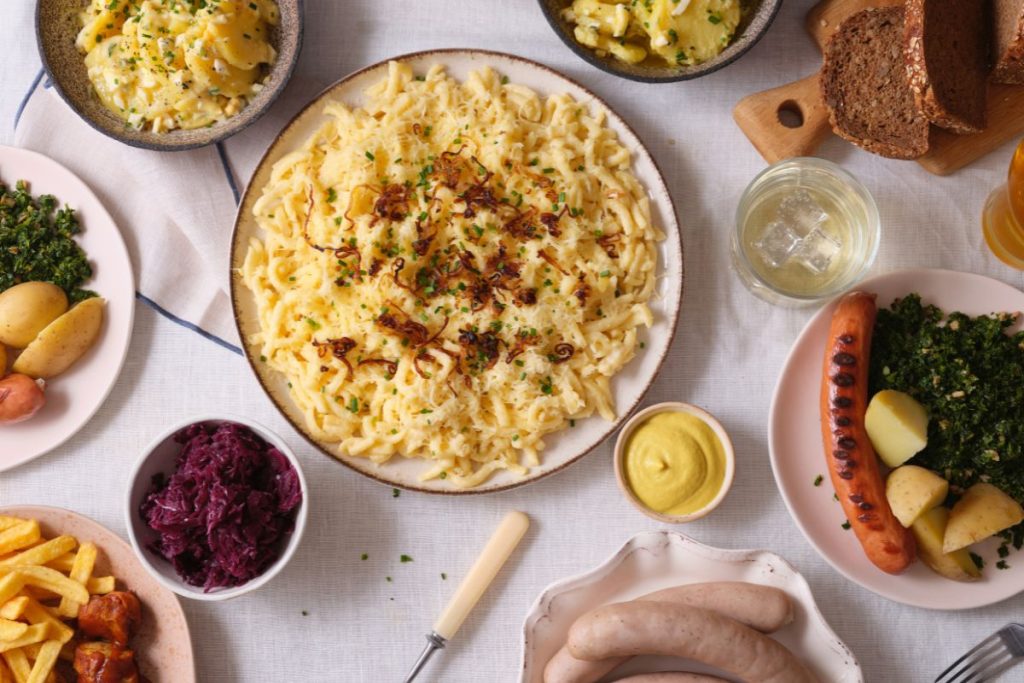
Spätzle, originating from Baden-Württemberg, are egg noodles that can be served plain or with cheese, known as käsespätzle. This cheesy variant is especially popular in southern Germany, particularly in Swabia, Bavaria, and the Allgäu region.
Rouladen
Rouladen consists of bacon, onions, mustard, and pickles wrapped in sliced beef or veal. While vegetarian and other meat options are available, the traditional beef rouladen is particularly popular in western Germany and the Rhine region.
Sauerbraten
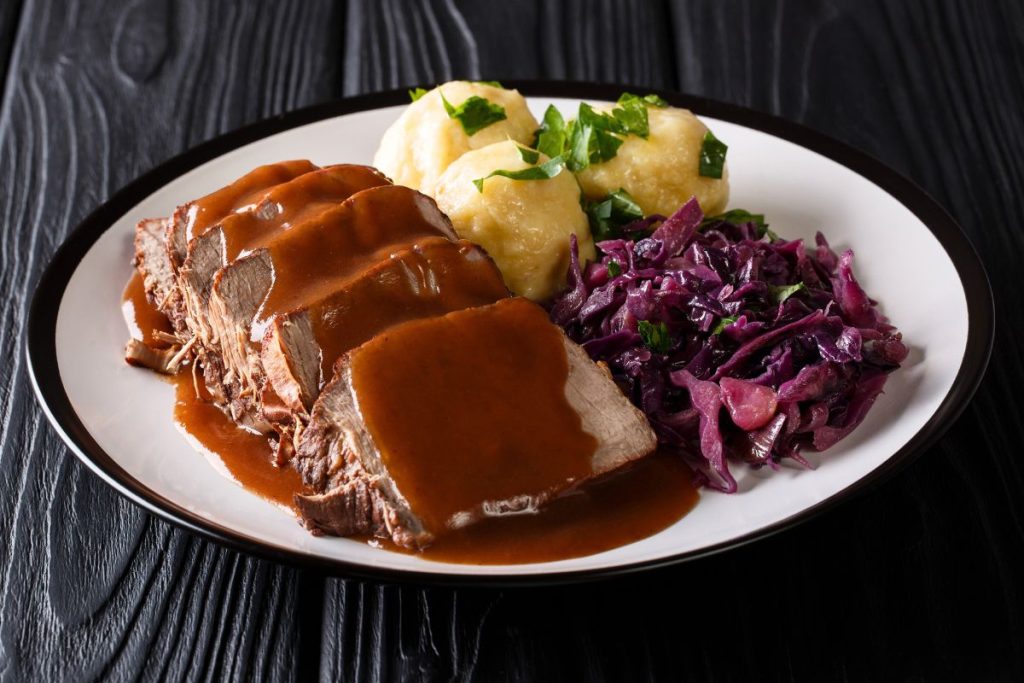
Considered one of Germany’s national dishes, sauerbraten is a pot roast that takes time to prepare but is well worth the effort. Traditionally made with horse meat, it is now more commonly prepared with beef or venison. Regional variations can be found in Franconia, Thuringia, Rhineland, Saarland, Silesia, and Swabia.
Also Read: First-timer’s Guide to Oktoberfest | All You Need to Know for Beer Cheer in Munich
Reibekuchen
Fried potato pancakes, known by many names including reibekuchen and kartoffelpuffer, are a beloved comfort and street food in Germany. They are often served with apple sauce, on black pumpernickel rye bread, or with treacle (a type of syrup).
Schwarzwälder Kirschtorte
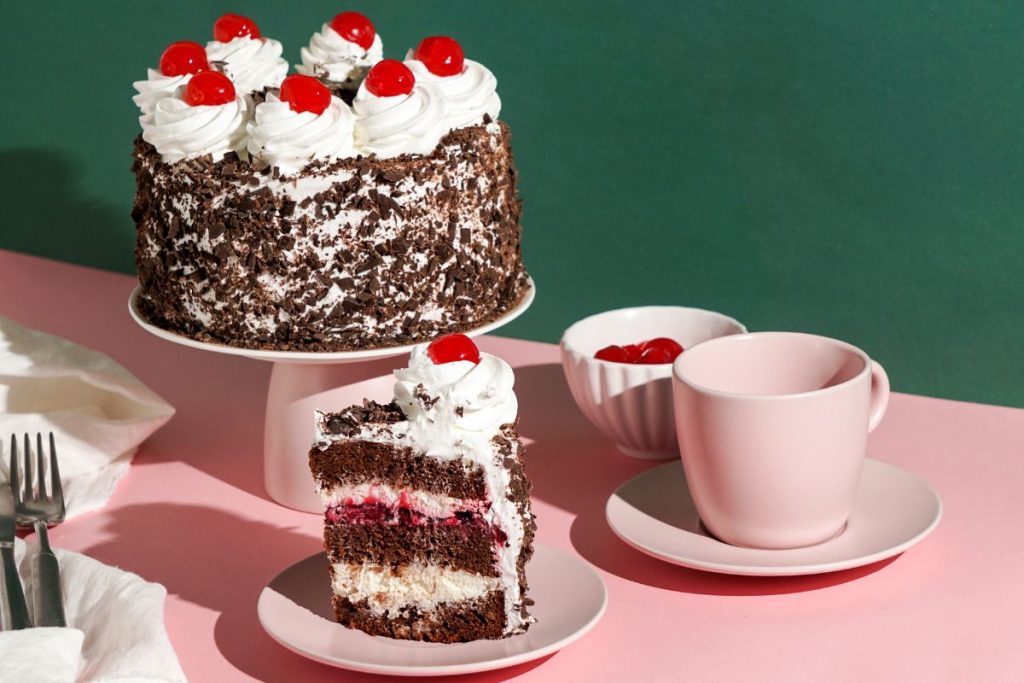
Among Germany’s many cakes, Schwarzwälder kirschtorte (Black Forest gateau) is particularly famous. It consists of layers of chocolate sponge cake, whipped cream, and sour cherries, drizzled with kirschwasser (a cherry brandy). Despite its name, the cake is not named after the Black Forest mountain range but after the regional specialty liquor.
Spaghettieis
Spaghettieis is an ice cream dessert designed to look like a plate of spaghetti. Vanilla ice cream is pressed through a noodle press, then placed over whipped cream and topped with strawberry sauce and white chocolate shavings to resemble tomato sauce and Parmesan cheese. Variations with dark chocolate and nuts are also available, mimicking spaghetti carbonara.
These dishes represent just a fraction of the rich culinary tapestry that Germany has to offer. Whether enjoying a hearty meal at a traditional restaurant or grabbing a quick bite at a street food stall, you’ll find that German cuisine is as diverse and satisfying as the country itself.
For latest travel news and updates, food and drink journeys, restaurant features, and more, like us on Facebook or follow us on Instagram. Read more on Travel and Food Network
Trending on TFN
A Spanish Odyssey: Trafalgar’s Unparalleled Best of Spain Itinerary
Imperial Splendors: Trafalgar’s 10-Day Sojourn in Prague, Vienna, and Budapest


